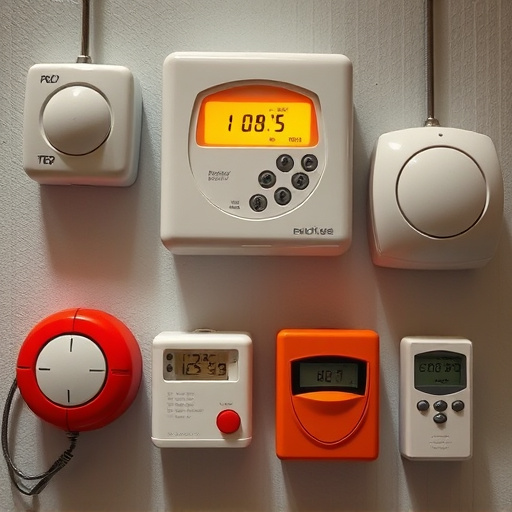Mobile safety alarms with distress signals provide individual security, featuring high-decibel sounds exceeding 100 dB for quick attention and response in dangerous situations. Top devices offer a best personal alarm sound distance of up to 500 feet, ensuring strategic placement for maximum projection. Personalized sounds, including music, enhance security, but users must choose melodies suitable for their environment while maintaining effective auditory reach.
Staying safe on-the-go has never been more crucial. Mobile safety alarms with distress signals offer vital peace of mind, especially in unpredictable situations. This article guides you through understanding key features, from loudness and clarity of distress signals to optimal range and coverage. We explore best practices for personal alarm usage and the growing trend of personalized sounds using music, ensuring you have the best protection possible with the ideal personal alarm sound distance.
- Understanding Mobile Safety Alarms: Essential Features
- Distress Signal Types: Loudness and Clarity
- Range and Coverage: Best Practices for Personal Alarm
- Personalized Sounds: Enhancing Safety with Music
Understanding Mobile Safety Alarms: Essential Features
Mobile safety alarms with distress signals are designed to provide individuals with a sense of security and peace of mind, especially in uncertain or potentially dangerous situations. These devices offer more than just loud sounds; they come equipped with essential features that cater to various needs. One of the most crucial aspects is the best personal alarm sound, which must be high-decibel and attention-grabbing enough to alert bystanders and deter potential threats quickly.
Additionally, distance is a critical factor. Alarms should offer reliable transmission over a significant range, ensuring help can be summoned from afar if needed. This feature is particularly vital in outdoor settings or large venues where the user might be separated from immediate assistance. Moreover, modern mobile safety alarms often incorporate GPS tracking and real-time location sharing, enhancing responsiveness during emergencies.
Distress Signal Types: Loudness and Clarity
When it comes to mobile safety alarms with distress signals, the effectiveness of the sound is paramount. The best personal alarm sound should be both loud and clear to ensure it captures attention quickly. In terms of distance, a high-quality alarm can be heard from up to 50 feet away, critical in emergency situations where every second counts.
Loudness is measured in decibels (dB), with higher values indicating greater intensity. A distress signal should aim for at least 100 dB to guarantee it overpowers ambient noise and draws immediate attention. Clarity, on the other hand, ensures that the alarm’s distinct tone remains intelligible even under stressful conditions. This is crucial as it allows bystanders or emergency responders to recognize the alarm’s purpose without confusion.
Range and Coverage: Best Practices for Personal Alarm
When considering a mobile safety alarm with distress signals, understanding the range and coverage is crucial for peace of mind. The best personal alarm devices offer a sound distance of up to 500 feet (approximately 152 meters), ensuring you’re heard even in larger spaces or open areas. This range allows users to trigger an alert from a safe distance, making it ideal for outdoor activities, emergency situations, or when traveling solo.
Best practices suggest positioning the alarm device strategically for maximum coverage. Holding it high above your head when activating the distress signal can help project the sound more effectively over longer distances. Additionally, keeping the device in an easily accessible location enables quick responses during emergencies, making it a valuable tool for personal safety and emergency preparedness.
Personalized Sounds: Enhancing Safety with Music
Personalized sounds in mobile safety alarms offer a unique and innovative way to enhance personal security. Users can now choose from a variety of distress signal options, including music, to alert others when they need help. This feature is particularly useful for individuals with specific preferences or needs, such as those who find certain melodies more attention-grabbing than standard beeps or sirens.
Selecting the best personal alarm sound distance involves considering both auditory effectiveness and personal taste. Music can travel a considerable distance in open areas or through buildings, ensuring that distress signals reach neighbors, emergency services, or bystanders quickly. The choice of melody should also complement the environment; for instance, loud, high-energy music might be suitable for urban settings with constant background noise, while softer, more melodic sounds could work better in quieter suburban neighborhoods.
Mobile safety alarms equipped with distress signals are powerful tools for personal safety. By understanding key features like sound types, range, and personalized alerts, users can choose the best personal alarm for their needs. Selecting an alarm with a loud, clear signal and optimal distance ensures maximum effectiveness in emergencies. Incorporating personalized sounds enhances comfort and readiness, making these devices invaluable additions to any individual’s safety strategy.
